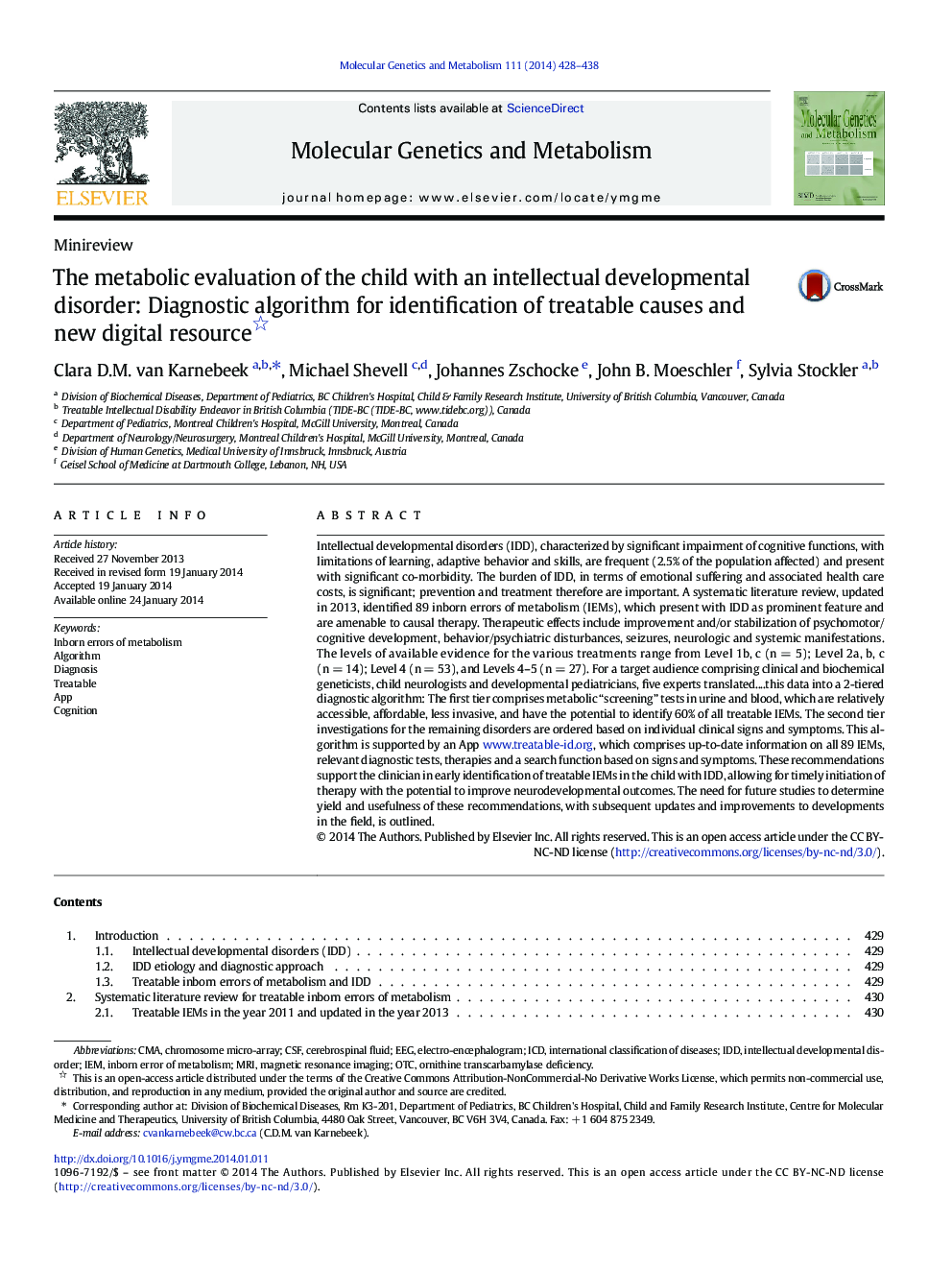| کد مقاله | کد نشریه | سال انتشار | مقاله انگلیسی | نسخه تمام متن |
|---|---|---|---|---|
| 10833614 | 1065801 | 2014 | 11 صفحه PDF | دانلود رایگان |
عنوان انگلیسی مقاله ISI
The metabolic evaluation of the child with an intellectual developmental disorder: Diagnostic algorithm for identification of treatable causes and new digital resource
ترجمه فارسی عنوان
ارزیابی متابولیسم کودک با اختلال رشد فکری: الگوریتم تشخیصی برای شناسایی علل قابل درمان و منابع دیجیتال جدید
دانلود مقاله + سفارش ترجمه
دانلود مقاله ISI انگلیسی
رایگان برای ایرانیان
کلمات کلیدی
IDDAPPOTCCMAElectro-encephalogram - الکتروآنسفالوگرامAlgorithm - الگوریتمMRI - امآرآی یا تصویرسازی تشدید مغناطیسیIEM - ایامDiagnosis - تشخیصMagnetic resonance imaging - تصویربرداری رزونانس مغناطیسیInborn errors of metabolism - خطاهای متولد شده متابولیسمInborn error of metabolism - خطای متولد شده متابولیسمICD - دفیبریلاتورهای کاردیوورتر کاشتنیCognition - شناختInternational Classification of Diseases - طبقه بندی بین المللی بیماری هاCerebrospinal fluid - مایع مغزی نخاعیCSF - مایع مغزی نخاعیEEG - نوار مغزیOrnithine transcarbamylase deficiency - کمبود اورنیتین ترانس کربامیلاز
موضوعات مرتبط
علوم زیستی و بیوفناوری
بیوشیمی، ژنتیک و زیست شناسی مولکولی
زیست شیمی
چکیده انگلیسی
Intellectual developmental disorders (IDD), characterized by significant impairment of cognitive functions, with limitations of learning, adaptive behavior and skills, are frequent (2.5% of the population affected) and present with significant co-morbidity. The burden of IDD, in terms of emotional suffering and associated health care costs, is significant; prevention and treatment therefore are important. A systematic literature review, updated in 2013, identified 89 inborn errors of metabolism (IEMs), which present with IDD as prominent feature and are amenable to causal therapy. Therapeutic effects include improvement and/or stabilization of psychomotor/cognitive development, behavior/psychiatric disturbances, seizures, neurologic and systemic manifestations. The levels of available evidence for the various treatments range from Level 1b, c (n = 5); Level 2a, b, c (n = 14); Level 4 (n = 53), and Levels 4-5 (n = 27). For a target audience comprising clinical and biochemical geneticists, child neurologists and developmental pediatricians, five experts translated....this data into a 2-tiered diagnostic algorithm: The first tier comprises metabolic “screening” tests in urine and blood, which are relatively accessible, affordable, less invasive, and have the potential to identify 60% of all treatable IEMs. The second tier investigations for the remaining disorders are ordered based on individual clinical signs and symptoms. This algorithm is supported by an App www.treatable-id.org, which comprises up-to-date information on all 89 IEMs, relevant diagnostic tests, therapies and a search function based on signs and symptoms. These recommendations support the clinician in early identification of treatable IEMs in the child with IDD, allowing for timely initiation of therapy with the potential to improve neurodevelopmental outcomes. The need for future studies to determine yield and usefulness of these recommendations, with subsequent updates and improvements to developments in the field, is outlined.
ناشر
Database: Elsevier - ScienceDirect (ساینس دایرکت)
Journal: Molecular Genetics and Metabolism - Volume 111, Issue 4, April 2014, Pages 428-438
Journal: Molecular Genetics and Metabolism - Volume 111, Issue 4, April 2014, Pages 428-438
نویسندگان
Clara D.M. van Karnebeek, Michael Shevell, Johannes Zschocke, John B. Moeschler, Sylvia Stockler,
